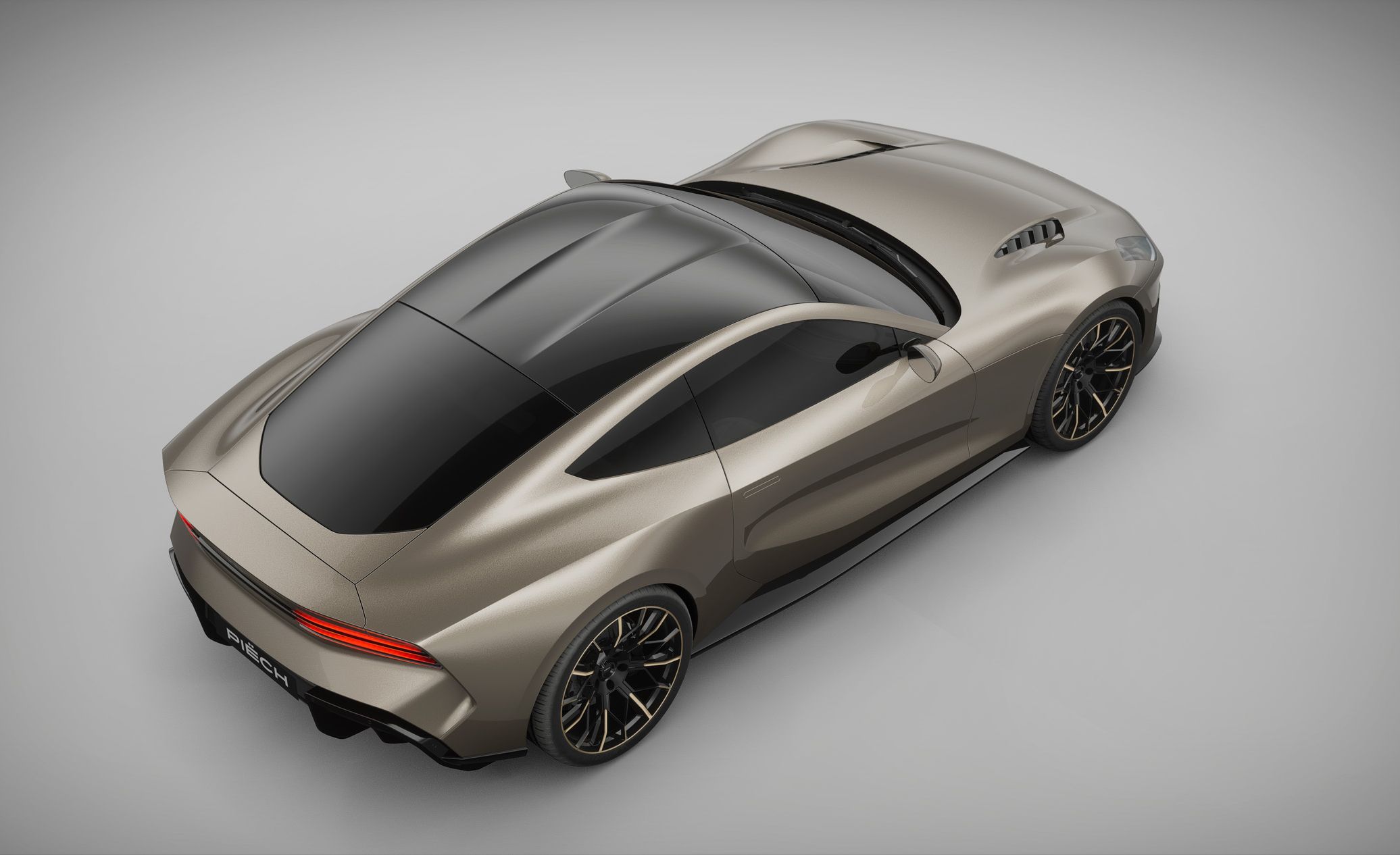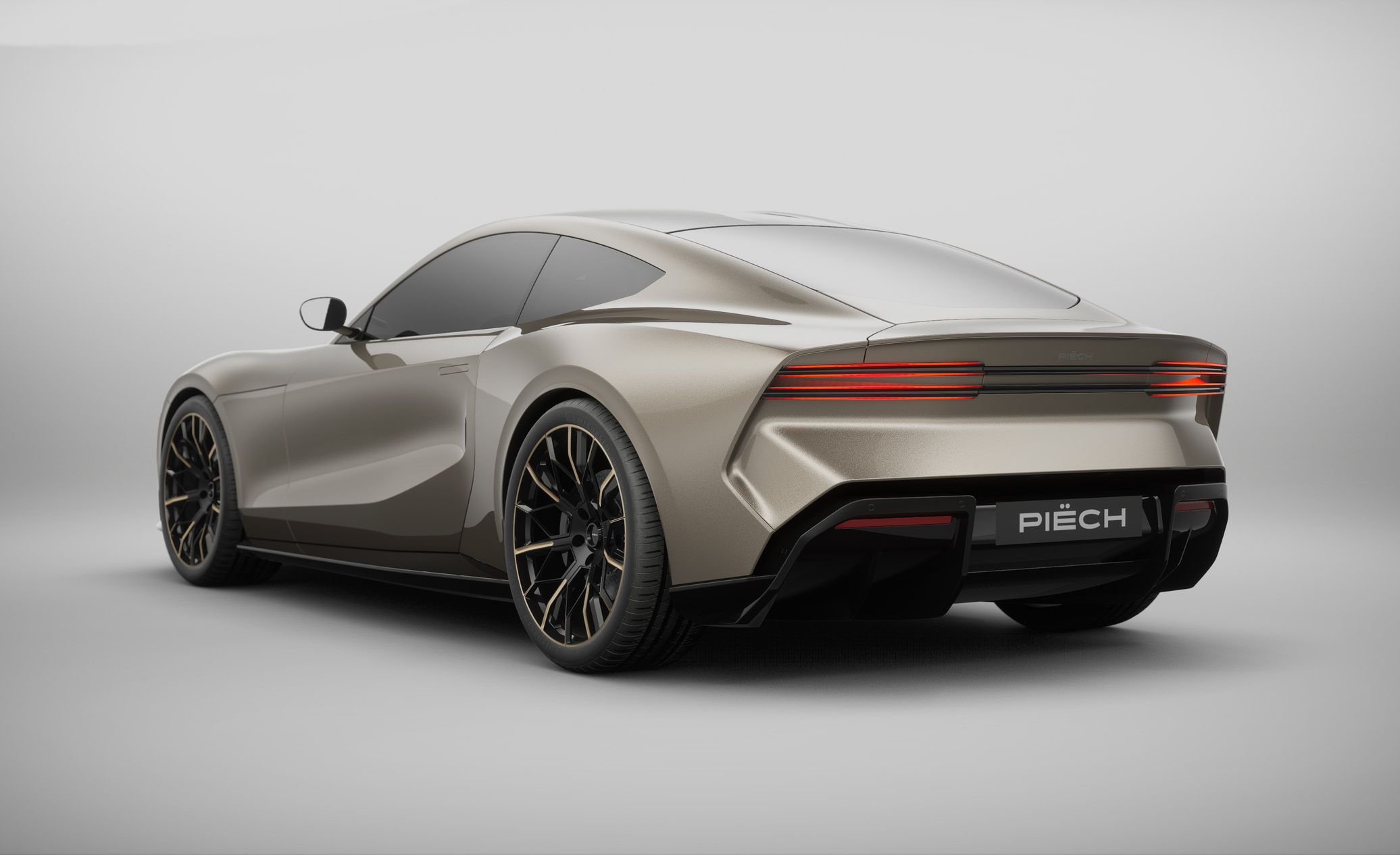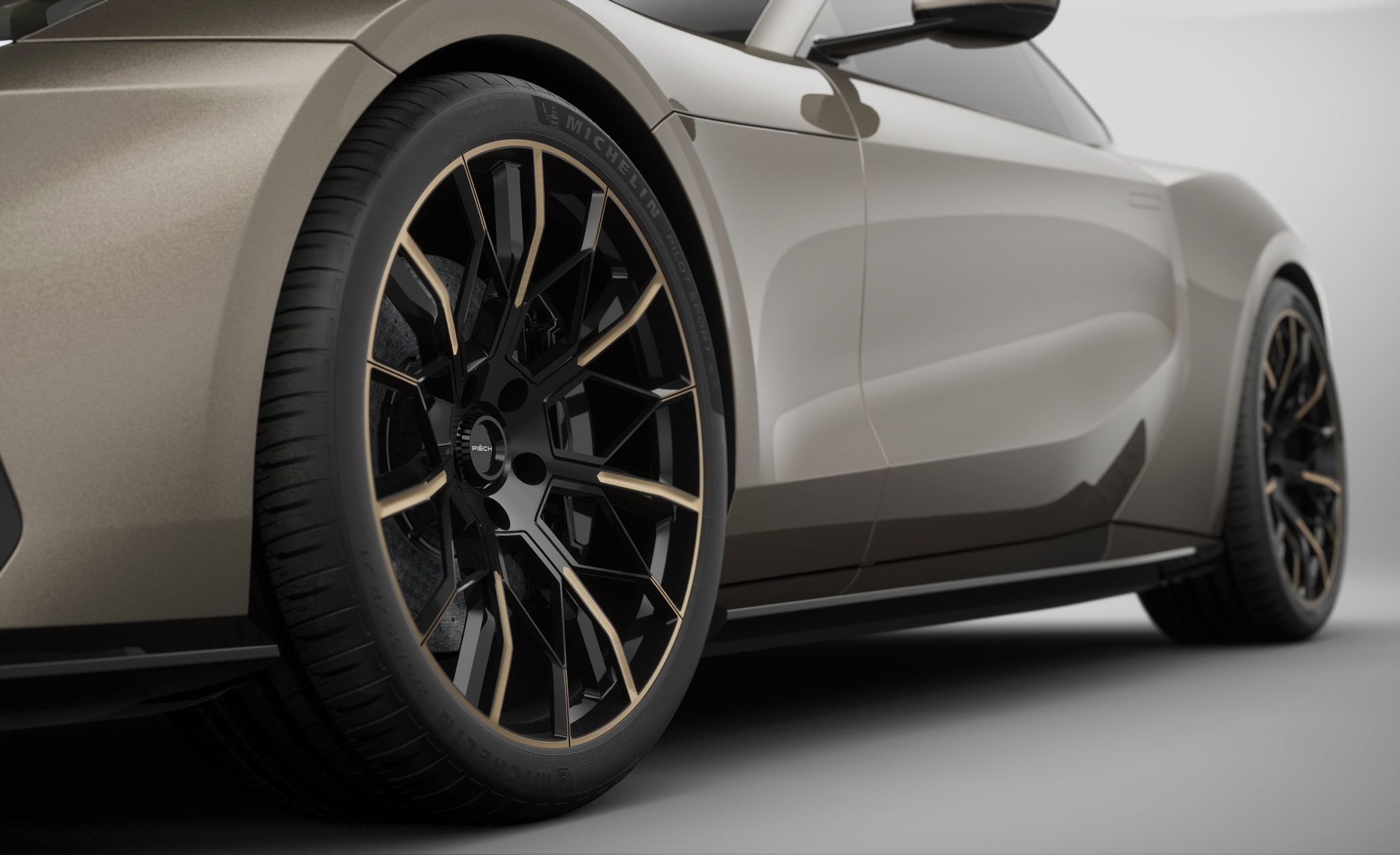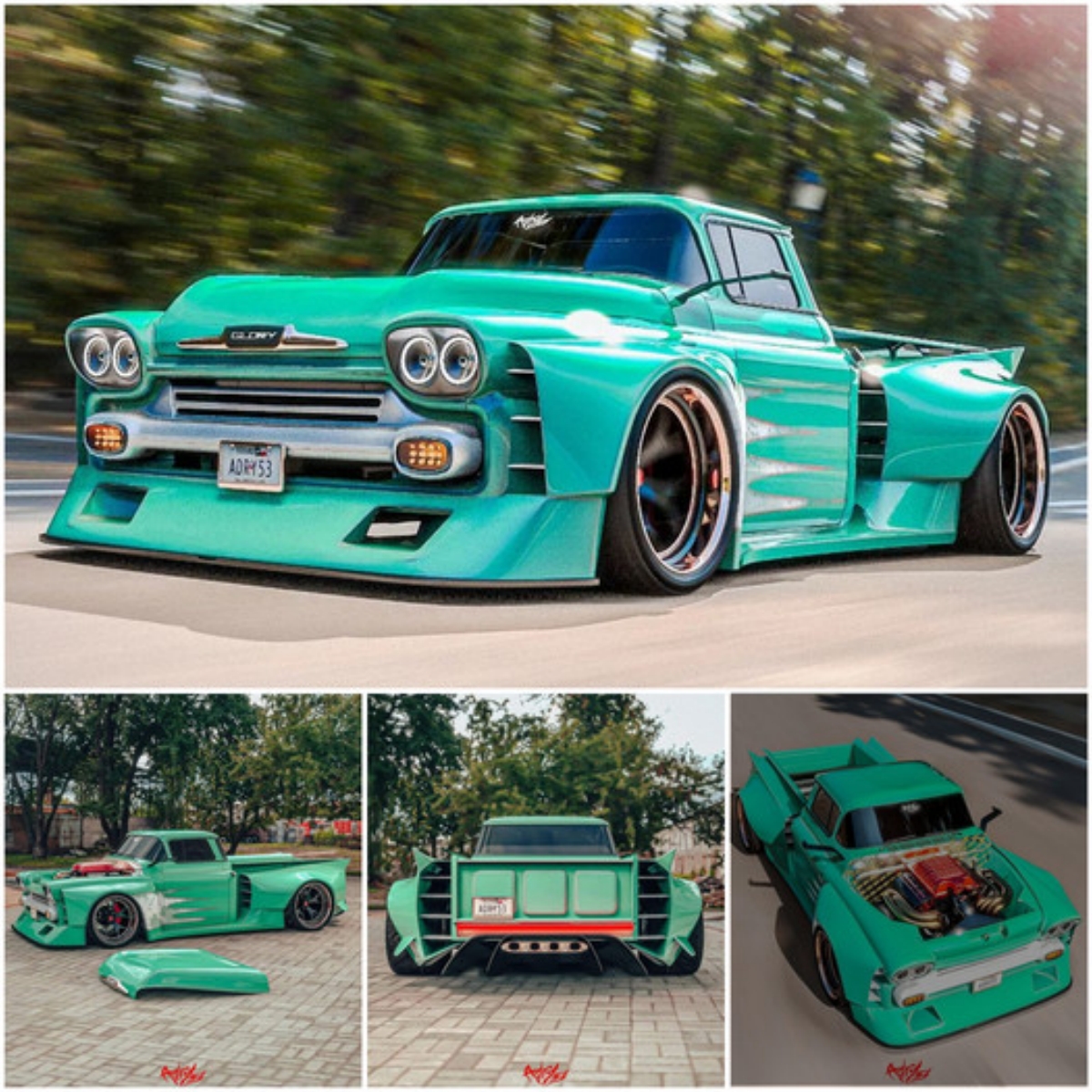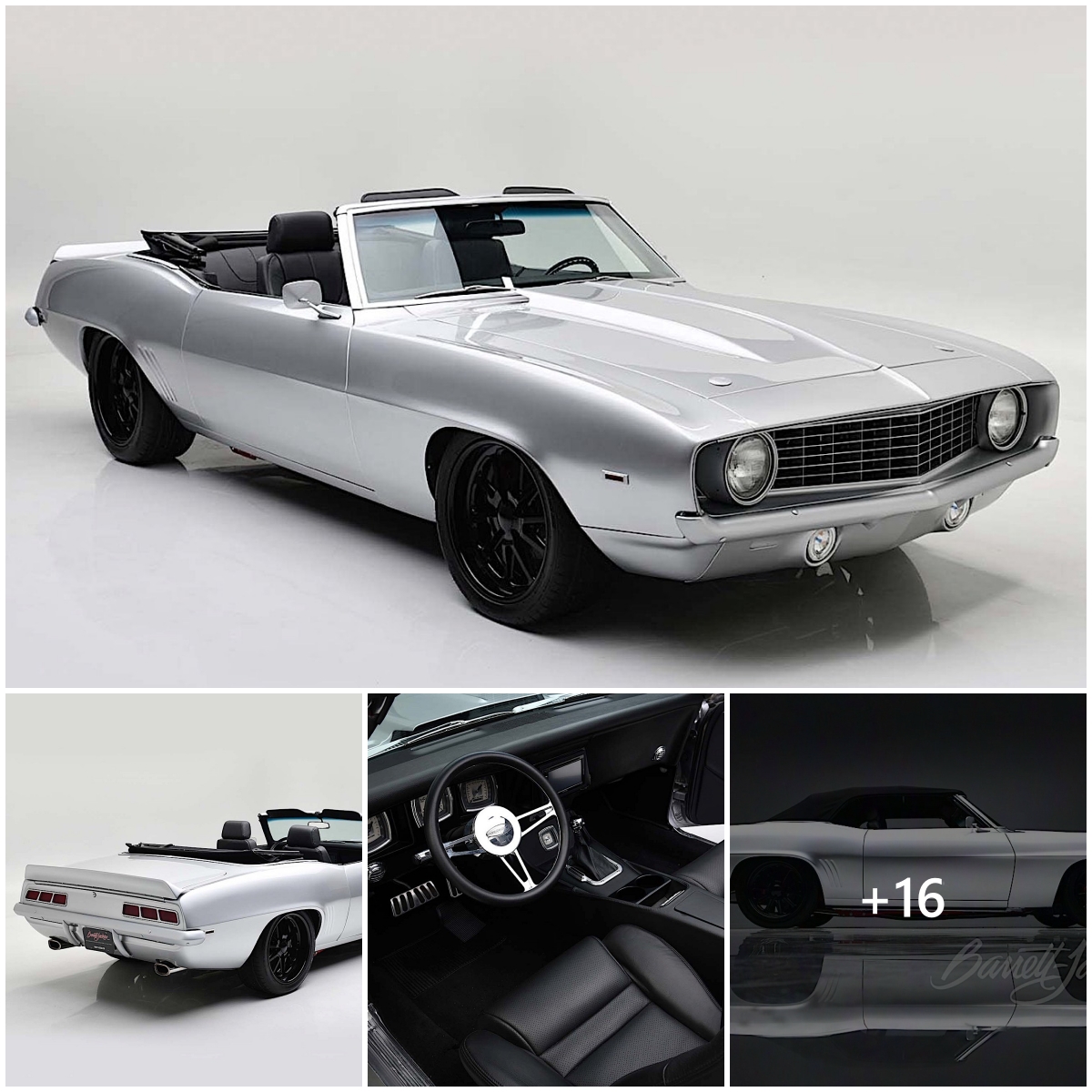
Founded in 2017, Piëch Automotive first stepped into the limelight at the 2019 Geneva auto show when the company presented the Mark Zero. The two-seat sports car was powered by a new type of allegedly radically efficient Chinese lithium-ion battery said to be capable of recharging from 10 to 80 percent in under five minutes. To be priced from the equivalent of about $150,000, the triple-motor all-wheel-drive 611-hp EV was designed in-house and originally scheduled to go into low-volume production in 2024. A four-door sedan and an SUV were due to follow suit.
Piëch Automotive was fathered by Rea Stark Rajcic and Anton M. (Toni) Piëch, son of Ferdinand Piech. The elder Piëch, though, was explicitly critical of the project, saying, “I am in no way involved, nor do I take an active interest in it.” Ouch.
After that effort collapsed, Toni Piëch started again, this time with Tobias Moers, formerly the number-one guy at Mercedes-AMG and Aston Martin, and chief technical officer Ralph Illenberger. They introduced a more modern new design and developed a notably more advanced engineering concept, hoping to attract fresh investors. If all goes according to plan, the first 1000-hp, $200,000-plus Piëch GT 2.0 built by Multimatic (of Ford GT fame) in Canada will hit the road in 2028.
Still only a full-size clay model, the fetching two-plus-two-seater is the work of David Seesing, whose most recent claim to fame is the stillborn TVR Griffith. The 4000-pound sports car named after one of the European car industry giants is 188.2 inches long, 78.7 inches wide, and 53.1 inches high. It sits on a 109.4-inch wheelbase, and its carbon-fiber belly is filled with 16 battery modules, each of which contains 312 individual cylindrical cells. The total capacity adds up to 90.0 kWh, which feeds two electric motors, each rated at 503 horsepower and 406 pound-feet for a combined output of over 1000 horsepower and 800 pound-feet of torque.
Top Speed of 187 MPH
Although the first running prototype won’t be complete before late next year, Piëch is already advertising key performance figures including a top speed of 187 mph, a 2.6-second acceleration time to 62 mph, and a WLTP range of 312 miles—solid stuff, but nothing the new Porsche Taycan Turbo couldn’t match for similar money. The newcomer will thus also have to score with soft assets such as rarity, customization, and, most significantly, the allegedly truly emotional driving experience.
The design, a radical departure from the homespun initial effort, confirms the restart. It combines a subtle British touch with standard GT proportions, chunky German solidity, and satisfying details such as intricate head- and taillights and machined 22-inch wheels. We don’t know yet what the interior looks like, but Tobias Moers is adamant that the Piëch GT will offer the widest possible choice of color and trim options and that no two cars will be the same. That’s because personalization extends to the software by inviting the user to compose an individual soundtrack, to dial in the dynamic drive modes, and even to generate artificial vibrations.
The underpinnings of the Piëch GT are quite straightforward. The multi-link suspension is steel sprung front and rear, carbon-fiber rotors are available, and the steering offers a variable ratio and effort. A steer-by-wire option may be added at a later stage. There are no fancy air springs, no active anti roll-bars, no rear-wheel steering, no all-wheel drive. The most striking feature is perhaps the Piëch Dual2Drive layout, which splits the propulsion duties in two, allocating an independently operating motor to each rear wheel.
Motor and wheel are connected by a two-speed gearbox. Both power units entertain their own separate torque vectoring, traction control, and variable locking ratio properties masterminded by the Piëch Torque Controller in combination with POSA, short for Performance Oriented Software Architecture. The first gear ratio is 1:9, second is a longer-legged 1:5.
Ralph Illenberger details the principle: “The Dual2Drive system transfers the typical sports-car feeling we know from high-performance combustion-engine models to the quieter on-off realm of EVs. The key strength of the e-motor is its ability to unleash instant maximum torque at low rpm. Its main weakness is the declining torque-power curve at high rpm which kind of cushions the full-throttle high-speed acceleration.
“We compensate for this downside by emphasizing power over torque: Shifting from first into second, either manually or as part of the selected drive mode, provides that familiar kick in the butt that feels like the high-speed, high-rev boost effect typical of a traditional sports car.”
He claims the power delivery is punchy and progressive rather than linear and synthetic, allegedly recalling an old-fashioned combustion-engine GT.
The other innovations that Piëch claims will make a big difference are the batteries and the elaborate cooling system that ensures the drivetrain’s thermal well-being even on the track and when hooked up to a 500-kW fast charger. In essence, the GT uses the same industry-standard 21700 cells as a wide variety of handheld power tools. Among the available suppliers are household brands like Samsung and Panasonic as well as dedicated specialists like EVE (China), Molycell (Taiwan), and Universell (Germany).
Cost is not the main issue here. With cell tariffs ranging from 2.8 to 4.0 Euro for a 4.5-amp item, the price for the complete power pack varies between about $16,000 and $20,000—that’s less than a tenth of the complete vehicle’s asking price. More decisive are factors like energy density, heat resistance, degradation, and safety. Since cooling is key, Piëch has embarked on a multi-redundant sealed total immersion layout that entertains two oil circuits, two water circuits, and two just-in-case chillers to ensure maximum stability even under extreme operating conditions. Quips Tobias Moers: “We can feed energy at a constant maximum 500 kW from beginning to end, boosting the state of charge from 10 to 80 percent in under 10 minutes, which is not bad at all in view of the current infrastructure limitations.”
The modular vehicle architecture fuses a carbon-fiber monocoque with an aluminum front end subassembly and a steel rear axle module. Although the wheelbase is defined by the size of the battery, there is virtually no limit to the number of potential body styles. While Tobias Moers rules out a four-door coupe (“everybody has one, but the market doesn’t seem to like them”), an SUV, a extended-wheelbase sedan, and any type of bespoke few-offs are all on the shortlist. “We won’t do a facelift,” says Moers. “Instead, the plan is to use the first-gen platform over two relatively short five-year cycles with either a complete redesign or a broadening of the range at the halfway point.” While some startups embark on an online sales and marketing strategy, Piëch will do things the traditional way and appoint a bunch of high-end luxury dealers, with an initial focus on the Middle East and Europe, to be followed by North America and Asia.
Having worked with Multimatic before when he ran the show at AMG (for the AMG One) and Aston (Valkyrie), Tobias Moers saw no reason to look for a new R&D partner when he signed on the dotted line at Piëch. The idea is to build an initial batch of 2000 cars in 2028 and 2029, to increase the output to 4500 or even 5000 units with the addition of a second four-door model, and to reach an initial ceiling of 7000 to 8000 vehicles per annum at the beginning of the second life cycle in 2033 when a Purosangue-type SUV is likely to join the fray.
Toni Piëch expects the company to break even in 2029 and to be profitable the year after. Right now, the company has 70 mainly small investors and 30 full-time employees, but these numbers are bound to soar as the second round of financing is due to generate around more than double the initial investment. Middle East funding is pivotal, with family offices and local wealth management funds among the most prominent backers.
“The magic is in the brand,” claims Toni Piëch, who arrived at the Stuttgart launch location in a white Ferrari F12 on Swiss plates, not in his Urus or the Huracán, and certainly not in the unique Bugatti Voiture Noire that was his late father’s last special commission.
“The brand depends of course on the product, which is 80 percent Tobias. My role is to be the entrepreneur who must hold this enterprise together by convincing our backers that we’re here to stay.” On the R&D side, Piëch’s number-one ally is perhaps the Bosch Engineering Group (BEG), which agreed to mastermind the complex integration of hard- and software by means of a highly flexible central control unit and an ultra-fast CAN bus connection. BEG brain power must integrate the individual talents of the Piëch GT into a pace-setting new entity that has total driving pleasure written all over its sleek body.
“We could never afford to develop our own cells,” acknowledges Moers, “but we can buy the best batteries that are out there on the market. We could not fund that byte-powered megabrain either, but we can buy the top-notch know-how others have helped to establish. At the end of the day, it’s the mix that makes the difference. And as a team, we are confident that this very special mix is spot on in more ways than one.”
